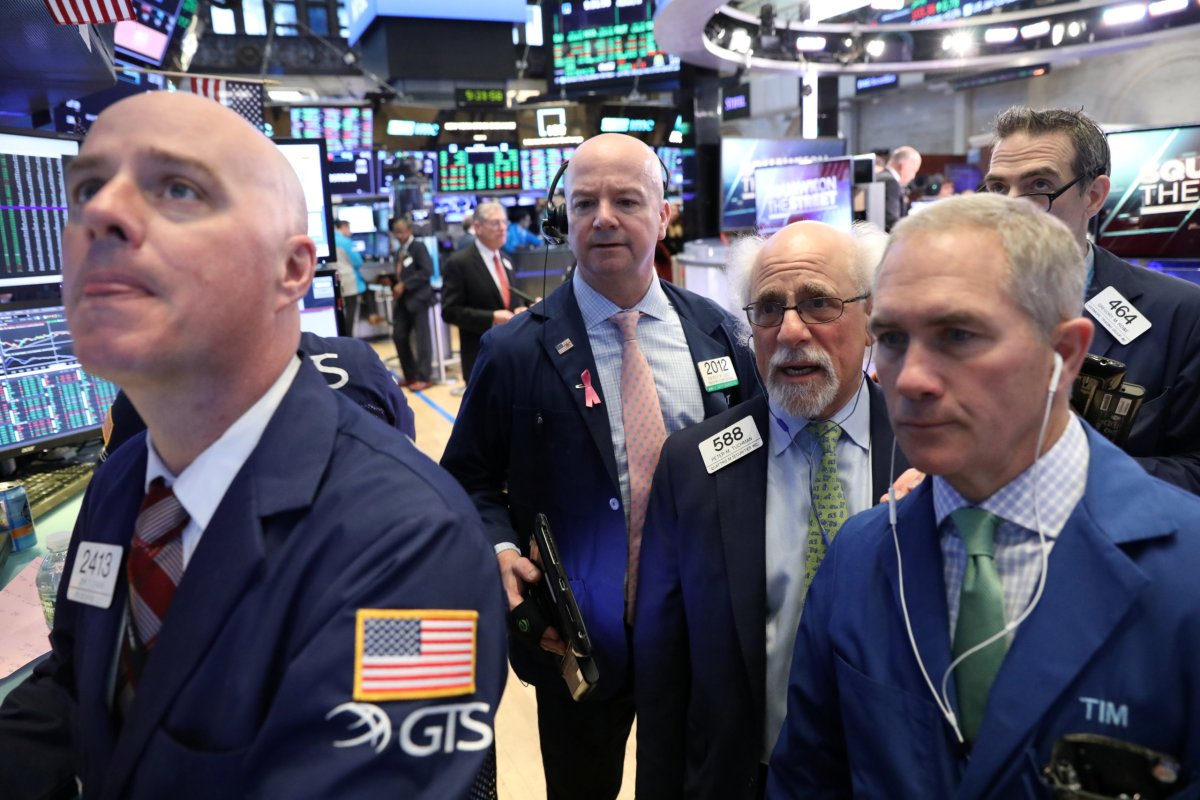By Stephen Culp
NEW YORK (Reuters) – Wall Street struggled to reverse early losses on Thursday as an unexpected drop in retail sales dampened investor hopes for progress at the ongoing U.S.-China trade talks in Beijing.
The S&P 500 eked out a small gain and held above its 200-day moving average, a key technical level. The Nasdaq turned positive, while the Dow remained slightly lower, weighed down by consumer staples and tariff-sensitive industrials.
All three major U.S. stock indexes were held back by rate-sensitive financial stocks as U.S. Treasury yields fell on weaker-than-expected economic data.
Talks to defuse the ongoing tariff dispute between the world’s two largest economies moved to a higher level as U.S.-China negotiations progressed in Beijing ahead of the March 1 deadline.
But optimism about the trade talks was undercut by a report from the U.S. Commerce Department showing retail sales in December suffered their biggest drop in more than nine years.
Separate reports from the Labor Department, showing a surprise increase in unemployment claims and an unforeseen dip in producer prices, pointed to a slowdown in U.S. economic activity.
“There’s no getting around it, (December) was a weak month for retail,” said Tim Ghriskey, chief investment strategist at Inverness Counsel in New York. “Concern about the economy is now reflected in Q1 estimates, which are now negative.”
Indeed, with the fourth-quarter reporting season now more that three-fourths complete, analysts now see earnings growth of 16.2 percent for the quarter, according to Refinitiv data.
But first-quarter estimates are less favorable. They show a 0.3 percent year-on-year decline, which would mark the first quarter of negative growth since the earnings recession that ended in 2016.
The Dow Jones Industrial Average fell 11.22 points, or 0.04 percent, to 25,532.05, the S&P 500 gained 1.07 points, or 0.04 percent, to 2,754.1 and the Nasdaq Composite added 24.67 points, or 0.33 percent, to 7,445.05.
Of the 11 major sectors in the S&P 500, 5 were in negative territory, with consumer staples and financials showing the biggest percentage declines.
Cisco Systems Inc rose 2.7 percent on the heels of a better-than-expected earnings report as the network gear maker benefited from strength in newer businesses and shrugged off the impact of the U.S.-China trade war.
Shares of American International Group Inc slid 7.6 percent, on course for its worst day in 4 years after the global insurer posted a quarterly loss.
Coca-Cola Co shares fizzled, dropping 7.6 percent and providing the biggest drag on the Dow after its full-year profit forecast fell well below Wall Street expectations.
Amazon.com dipped 0.7 percent after pulling the plug on its planned headquarters in New York due to local opposition.
Canada Goose’s quarterly results and profit forecasts beat analyst expectations. Still, the luxury coat maker’s U.S.-listed shares sank 12.1 percent.
Avon Products Inc plunged 11.4 percent after the multi-level marketing cosmetics brand missed quarterly revenue estimates.
Advancing issues outnumbered declining ones on the NYSE by a 1.49-to-1 ratio; on Nasdaq, a 1.49-to-1 ratio favored advancers.
The S&P 500 posted 17 new 52-week highs and 1 new lows; the Nasdaq Composite recorded 61 new highs and 22 new lows.
(Reporting by Stephen Culp; Editing by Dan Grebler)



















